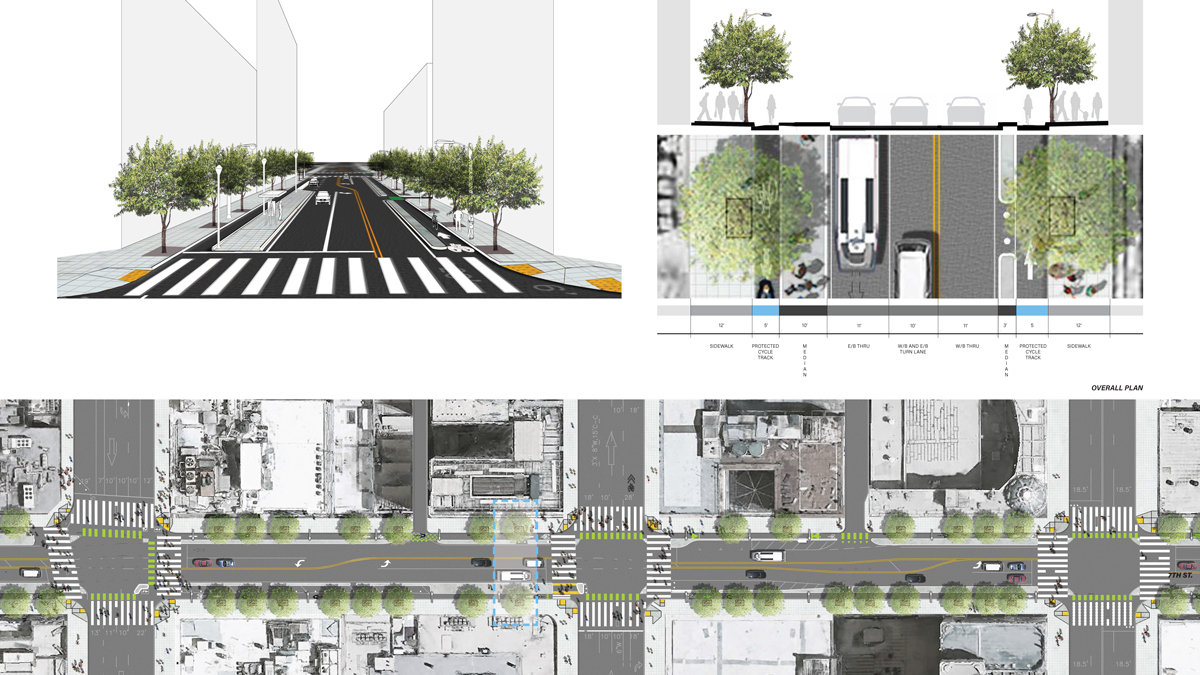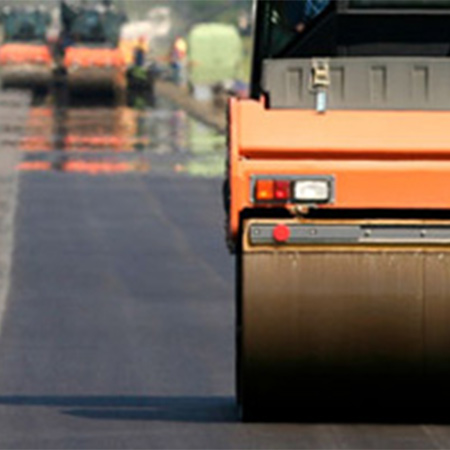5.0 minute read
June 13, 2022
Streets should serve everyone in a community, regardless of their age, mobility status, or preferred mode of transportation. That’s the concept behind Complete Streets—a process and approach to street design gaining traction nationwide and here in California.
Complete Streets safely and effectively accommodate multi-modal transportation systems, meaning vehicle traffic as well as pedestrians, cyclists, and buses. The scope and details of Complete Street projects vary depending on a community’s particular needs and goals. The designs themselves often include a mix of infrastructure elements, such as:

Sidewalks

Bike lanes

Pedestrian crossings

Curb extensions

Public transportation stops

Landscaping
A new standard emerges
Complete Streets are revolutionizing the way federal, state, and regional transportation agencies and communities think about roadways. Striving to improve community health, safety, and accessibility, many of these agencies have introduced ordinances and resolutions to encourage and guide the adoption of Complete Street elements. To date, 35 state governments have implemented such policies.1
In California, Caltrans announced a policy in December 2021 that requires all new transportation projects to include Complete Street elements. The state has even agreed to remove administrative barriers to help such projects succeed.
“California must reduce dependence on driving without sacrificing mobility and accessibility… it is important that we provide safe, convenient, sustainable, and accessible alternatives to driving to achieve our climate goals while equitably serving all Californians,” said Caltrans Director Toks Omishakin.2
Undeniable community assets
Studies show that well-designed road infrastructure can reduce the risk of bicycle injury as well as the risk of car crashes and pedestrian accidents. In addition to increased safety, thoughtfully designed streets produce an array of benefits in areas that top every community’s priority list:
- Equity: Complete Streets help to ensure that all commuters can reach their destinations regardless of which mode of travel they choose. Because motor vehicle fatalities disproportionately affect minority populations, street safety becomes an issue of equity.
- Accessibility: Carefully designed streets create greater opportunities and ease for pedestrians and those with disabilities, whether through wider sidewalks to accommodate wheelchairs or enhanced signaling for individuals with impaired vision or hearing.
- Sustainability: Streets with improved sidewalks, bike lanes, and comfortable public transportation stops can help reduce the number of cars on the road and, as a result, cut down on the associated emissions.
- Health: One study showed that people who reported having a place to walk were 43% more likely to meet the recommended amount of physical activity than those with no place to walk. Further, reducing harmful emissions by decreasing vehicle traffic can help improve asthma and similar health conditions for community residents.
- Aesthetics: Complete Streets are designed to look nicer, enhancing the aesthetic appeal of communities and commercial corridors and creating a nicer place for people to spend time.
Any of these benefits alone add value to a city or community. When combined, they transform a stretch of ordinary pavement into an opportunity for lasting community revitalization.
A Complete Streets leader in California
The engineering team at Harris and Associates has designed and contributed to numerous award-winning Complete Streets projects throughout California. We adapt our projects in response to real-world constraints and use engineering judgment and best practices to resolve design challenges.
Our projects often include solutions such as:
- Road and lane diets (reductions)
- Bike lanes and shared mobility spaces
- Intersection improvements (curb extensions, textures, roundabouts, crosswalks, bike boxes)
- Pavement treatments and stripping
- Stormwater control and management
In Los Angeles, Harris is helping to transform 7th Street in the City’s downtown corridor into an accessible, livable urban environment that caters to all forms of travelers. Our work includes providing full design of multiple phases of the project, estimating and schedules, assistance with meeting funding/grant goals, and extensive coordination with dozens of stakeholders.
When complete, the project will feature protected bike lanes, walkable sidewalks, and vastly improved pedestrian lighting, among other improvements. Enhanced streetscapes will also help draw foot traffic to the area, bringing more customers (and more revenue) to local businesses.
In Salinas, Harris is using the Complete Streets model to help improve Williams Road and improve safety within the Alisal District by designing a solution that reduces crash rates and positively impacts the lives of residents. Through community outreach meetings, we were able to partner with residents to identify the main factors important to them: safety, quality of life, and aesthetic value. Armed with this data, our solution included reconstructing the roadway section in order to adjust the existing cross slopes, constructing curb bulb-outs at various intersections in order to mitigate traffic and provide safer pedestrian crossings, and preparing the construction documents, which will also be used for coordinating the planned undergrounding work with PG&E.
We have provided similar civil design, project management, construction management, and inspection services for the cities of Marin, San Rafael, Albany, Concord, and Walnut Creek, to name a few. These Complete Streets projects directly align with our mission to build equitable, resilient, and sustainable communities for today and tomorrow.
To learn more about how our expert engineers are designing roadways that help communities thrive, contact Frank Lopez.
1https://smartgrowthamerica.org/program/national-complete-streets-coalition/policy-atlas/
Authors
Source
Harris & Associates
Markets
Transportation
Bridges
Highways
Rail + Transit
Municipal
Planning + Development
Public Works
Services
Civil Design
Municipal Engineering
Categories
Complete Streets
Equity
Safety













